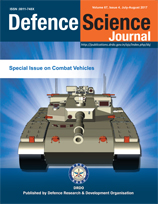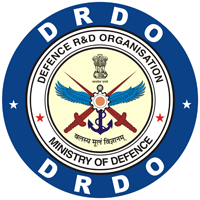Trends in Sighting Systems for Combat Vehicles
DOI:
https://doi.org/10.14429/dsj.67.11432Keywords:
Stabilised sighting system, Fire control system, Detection and tracking, Panorama generation, Auto-alerting, Digital image stabilisation, Image fusionAbstract
Search and tracking in dynamic condition, rapid re-targeting, precision pointing and long range engagement in day and night condition are core requisite of stabilised sighting systems used for combat vehicles. Complex battle field requires integrated fire control system with stabilised sighting system as its main constituent. It facilitates quick reaction to fire control system and provides vital edge in the battlefield scenario. Precision gimbal design, optics design, embedded engineering, control system, electro-optical sensors, target detection and tracking, panorama generation, auto-alerting, digital image stabilisation, image fusion and integration are important aspects of sighting system development. In this paper, design considerations for a state of art stabilised sighting system have been presented including laboratory and field evaluation methods for such systems.Downloads
Published
2017-06-30
How to Cite
Ansari, Z. A., Kumar, A., Marathe, R., & Nigam, M. J. (2017). Trends in Sighting Systems for Combat Vehicles. Defence Science Journal, 67(4), 407–411. https://doi.org/10.14429/dsj.67.11432
Issue
Section
Special Issue Papers
License
 Where otherwise noted, the Articles on this site are licensed under Creative Commons License: CC Attribution-Noncommercial-No Derivative Works 2.5 India
Where otherwise noted, the Articles on this site are licensed under Creative Commons License: CC Attribution-Noncommercial-No Derivative Works 2.5 India


